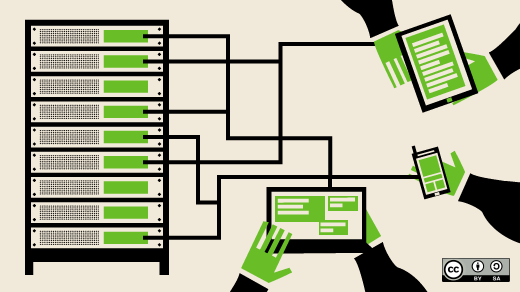IT organizations strive to deliver business value by increasing productivity and delivering services faster while remaining flexible enough to incorporate innovations like cloud, containers, and configuration automation. Modern workloads, whether they run on bare metal, virtual machines, containers, or private or public clouds, are expected to be portable and scalable. Supporting all this requires a modern, secure platform.
The most direct route to innovation is not always a straight line. With the growing adoption of private and public clouds, multiple architectures, and virtualization, today’s data center is like a globe, with varying infrastructure choices bringing it dimension and depth. And just as a pilot depends on air traffic controllers to provide continuous updates, your digital transformation journey should be guided by a trusted operating system like Linux to provide continuously updated technology and the most efficient and secure access to innovations like cloud, containers, and configuration automation.
Linux is a family of free, open source software operating systems built around the Linux kernel. Originally developed for personal computers based on the Intel x86 architecture, Linux has since been ported to more platforms than any other operating system. Thanks to the dominance of the Linux kernel-based Android OS on smartphones, Linux has the largest installed base of all general-purpose operating systems. Linux is also the leading operating system on servers and "big iron" systems such as mainframe computers, and it is the only OS used on TOP500 supercomputers.
To tap this functionality, many enterprise companies have adopted servers with a high-powered variant of the Linux open source operating system. These are designed to handle the most demanding business application requirements, such as network and system administration, database management, and web services. Linux servers are often chosen over other server operating systems for their stability, security, and flexibility. Leading Linux server operating systems include CentOS, Debian, Ubuntu Server, Slackware, and Gentoo.
What features and benefits on an enterprise-grade Linux server should you consider for an enterprise workload? First, built-in security controls and scale-out manageability through interfaces that are familiar to both Linux and Windows administrators will enable you to focus on business growth instead of reacting to security vulnerabilities and costly management configuration mistakes. The Linux server you choose should provide security technologies and certifications and maintain enhancements to combat intrusions, protect your data, and meet regulatory compliance for an open source project or a specific OS vendor. It should:
- Deliver resources with security using integrated control features such as centralized identity management and Security-Enhanced Linux (SELinux), mandatory access controls (MAC) on a foundation that is Common Criteria- and FIPS 140-2-certified, as well as the first Linux container framework support to be Common Criteria-certified.
- Automate regulatory compliance and security configuration remediation across your system and within containers with image scanning like OpenSCAP that checks, remediates against vulnerabilities and configuration security baselines, including against National Checklist Program content for PCI-DSS, DISA STIG, and more. Additionally, it should centralize and scale out configuration remediation across your entire hybrid environment.
- Receive continuous vulnerability security updates from the upstream community itself or a specific OS vendor, which remedies and delivers all critical issues by next business day, if possible, to minimize business impact.
As the foundation of your hybrid data center, the Linux server should provide platform manageability and flexible integration with legacy management and automation infrastructure. This will save IT staff time and reduce unplanned downtime compared to a non-paid Linux infrastructure. It should:
- Speed image building, deployment, and patch management across the data center with built-in capabilities and enrich system life-cycle management, provisioning, and enhanced patching, and more.
- Manage individual systems from an easy-to-use web interface that includes storage, networking, containers, services, and more.
- Automate consistency and compliance across heterogeneous multiple environments and reduce scripting rework with system roles using native configuration management tools like Ansible, Chef, Salt, Puppet, and more.
- Simplify platform updates with in-place upgrades that eliminate the hassle of machine migrations and application rebuilds.
- Resolve technical issues before they impact business operations by using predictive analytics tools to automate identification and remediation of anomalies and their root causes.
Linux servers are powering innovation around the globe. As the platform for enterprise workloads, a Linux server should provide a stable, secure, and performance-driven foundation for the applications that run the business of today and tomorrow.







Comments are closed.